Metro (subway) in Amsterdam:
info, tickets, map 2024
The Metro in Amsterdam is operated by the municipal public transport company GVB, which is also responsible for the tram, bus, and ferries.
In this travel guide, you will find all important information for passengers and tips for using the metro in Amsterdam.
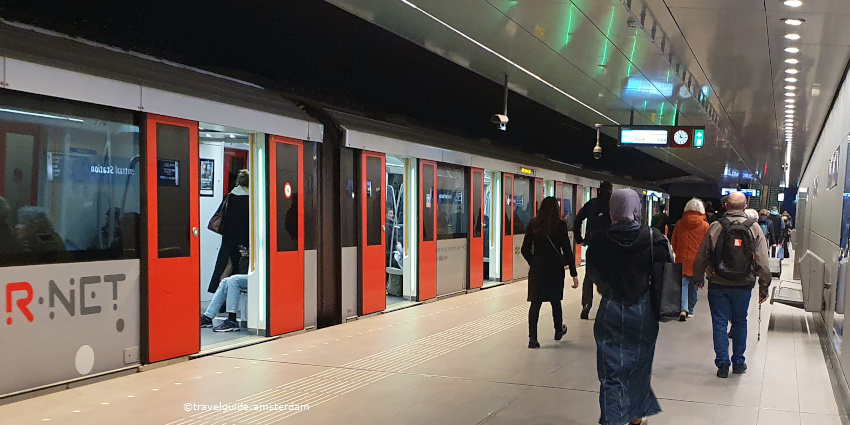
Most of the metro in Amsterdam runs above ground. The subway only goes underground in the city center.
Tickets for public transport in Amsterdam:
Which ticket option is best for me?
Whether single ride via e-purse, also referred to as OV-card, all-day ticket, “I Amsterdam Card”, or “Amsterdam Travel Card”, you will find detailed information for all, as well as current fares here.
It allows you to quickly and easily find the right ticket option for your stay in Amsterdam. Researching all options upfront and knowing which ticket option works best for you, will save you money and time after arrival and prevent stressful situations.
Our advice – when you don’t want to deal with the tariff system and ticket machines:
The single-day or multi-day tickets that are available for the public transport system in Amsterdam are typically the best choices for visitors.
These tickets allow unlimited use of the Metro (subway), GVB bus system, trams, as well as ferries for the entire period of validity (1 – 7 days).
These tickets are rather inexpensive for a European metropolitan city. For 2024 fares range between €5.85 and €9 a day, depending on period of validity.
Convenience:
You can purchase these tickets online before your trip without additional fees via the website of the authorised GVB ticket seller – click here –. You will not have to deal with ticket machines or the tariff system upon your arrival.
That saves time and nerves – after all, you will have better things to do in Amsterdam…
Lines and route network
The Amsterdam Metro (Dutch: Amsterdamse metro) services the city as well as the surrounding communities of Diemen, Amstelveen, and Ouder-Amstel.
More than 50 metro lines in Amsterdam?
The metro in Amsterdam currently (as of 2024) consists of five lines and 59 stops.
The numbering of the lines starts with 50, so at first glance the route network appears more complex than it actually is.
Four of the five lines have their starting point at Amsterdam Centraal station.
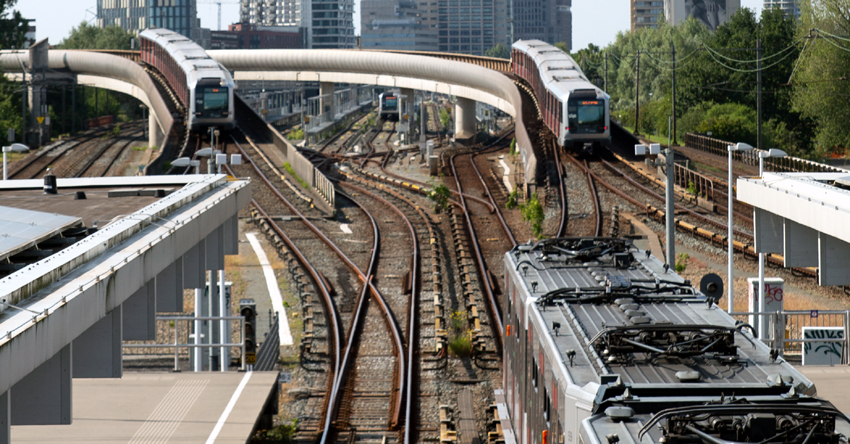
Amsterdam has a modern metro. In the outskirts of the city, the trains do not run underground. (Image: travelguide.amsterdam)
Line 50
Line 50 connects the south-eastern and western districts of the city without crossing the city centre.
Line 50 is also called the Ringlijn (ring line). It is the only line that does not pass through Amsterdam Centraal station.
The final stops are “Isolatorweg” in the northwest and “Gein” in the southwest. With the stop “Bijlmer Arena” it also serves the well-known football stadium Johan Cruyff Arena.
Almost all stations on this line were built to a standard design. Most subway stations have a central platform, which passengers can access via escalators and an elevator.

The “Bijlmer ArenA” stop of lines 50 and 54 is near the Johan Cruyff Arena (formerly Amsterdam Arena). It is also an important station for Dutch railways (Image: travelguide.amsterdam)
Line 51
Line 51 starts at the central station “Amsterdam Centraal” in the city centre. Here, the line runs in the first metro tunnel from the central station to the “Amstel” stop.
Change of route
Since 2020, line M51 no longer turns southwest at the south station “Zuid” (terminal stop “Amstelveen”), but runs parallel to line 50 to terminal stop “Isolatorweg”.
If you are using an older route map, it may be confusing.
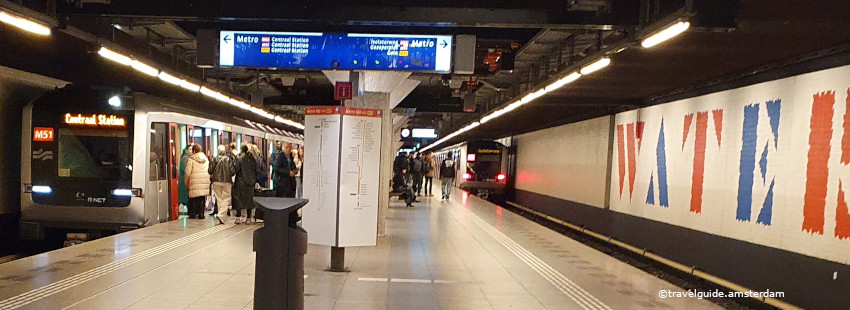
The M51 at the “Waterlooplein” metro station. Three of Amsterdam’s five metro lines intersect here: 51, 53 and M54
Linie 52
The new line 52 runs to Zuid station or north to Noord station.
Construction of metro line M52 (also Noord/Zuidlijn) started in 2002. It was completed in 2018.
It runs from Zuid station northwards via Central Station to Noord station. A southbound extension of route 52 to Amsterdam Airport Schiphol is planned.

The station “Europaplein” of line 52. The metro line is also called Noord-Zuidlijn (“North-South Line”) and was completed in 2018. (Image: Johan Wieland, CC BY-ND 2.0 license)
Since 2018, the north of Amsterdam has also been connected to the metro network.
It is the first line to cross under the IJ (Zuiderzee estuary) through a tunnel. This means that the northern parts of the city are also connected to the subway network.
Lines 53 and 54
Lines 53 and 54 provide a connection from the city centre to the areas of Diemen, Duivendrecht in the southeast.
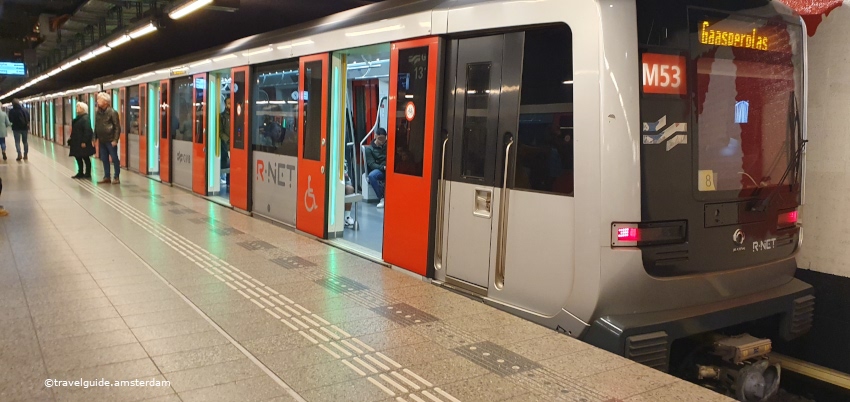
Lines 53 and 54 run parallel in the city centre. From the “Van der Madeweg” metro station, the lines separate. Line 54 heads south, while line 53 heads east.
Route network plan / map for download
→ Download:
Map: Metro lines in Amsterdam / Network map (250kByte)
→ Download:
Map – Metro lines and tram lines in Amsterdam / route network plan (as of 2023 / 2024)
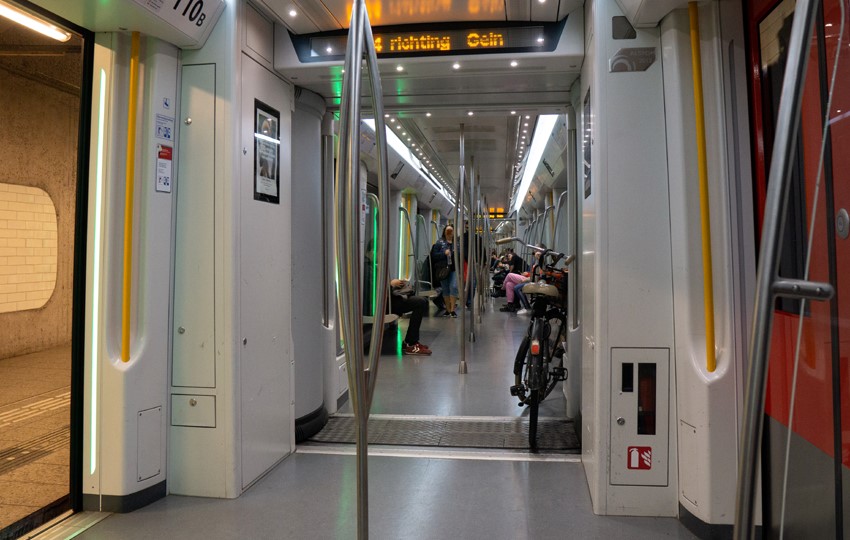
The GVB metro allows you to travel quickly and cheaply within Amsterdam. (Image: Tom Page, CC 2.0 licence)
Tips for passengers
- Keep your ticket until the end of the journey
When you enter the metro station, your ticket is automatically checked. Do not throw the ticket away afterwards. Your ticket will also be checked again at the exit.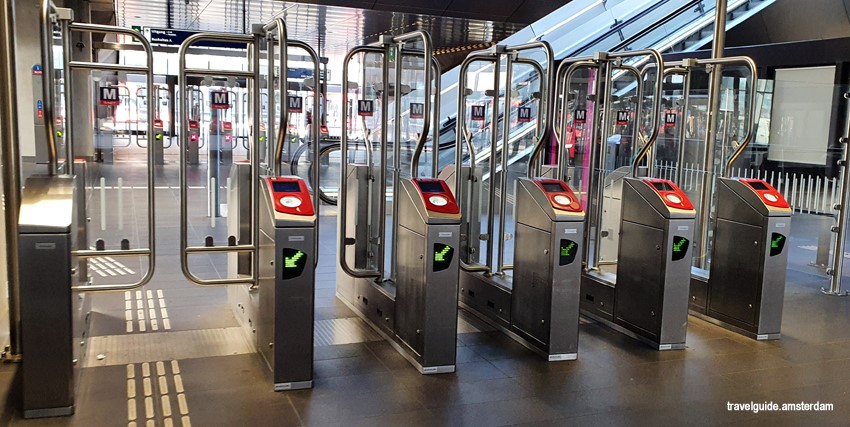
Your ticket will be checked at these readers when you enter and leave the metro station. Therefore, keep your ticket until after you leave the metro.
- Day or multi-day tickets pay off quickly
If you don’t just want to make a single journey, then a day or multi-day ticket might be of interest.
With this card, you can use the metro (underground), GVB buses, trams (trams) and ferries free of charge and unlimited for the entire period of validity (1-7 days).
The card is very cheap for a European metropolis. It costs between 5.85 euros and 9 euros per day in 2024, depending on the period of validity.
You can buy the cards online before your trip at no extra charge. This way you don’t have to deal with ticket machines and fare systems in Amsterdam. This saves time and stress – there are better things to do in Amsterdam …
History of the metro in amsterdam
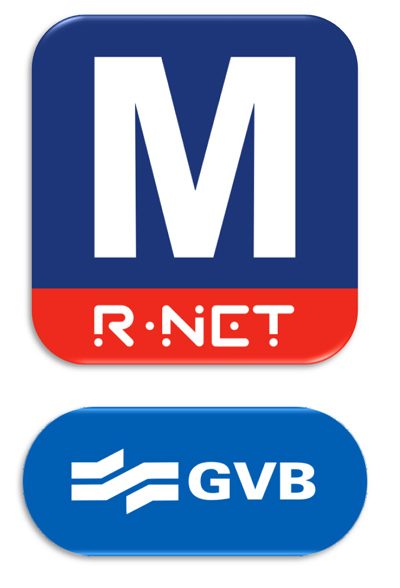
The logos of the Amsterdam Metro and its operating company, the GVB, often point to the nearest Metro stop.
Compared to other European metropolises such as London or Paris, the metro in Amsterdam is still very young.
The first ideas for a metro in Amsterdam already existed in the 1920s. But the economic crisis and the Second World War put a stop to these ideas.
Growing prosperity after the war and the associated motorisation of the population caused traffic problems to grow, and not only in Amsterdam. Many cities in Europe now began to implement the pre-war plans. At the end of the 1950s, for example, construction began on the metro in Lisbon.
Construction begins
Amsterdam began planning the metro in earnest in the 1960s. The first plan included a metro network with 4 lines that would replace many of the existing tram lines.
In 1970, construction began on the Oostlijn (East Line), which connects the city centre with the eastern districts of Bijlmermeer and Amstel. Here, part of the lines, especially outside the city centre, already ran above ground.
Since Amsterdam wanted to take a pioneering role as a city without car traffic, the metro network and the bicycle infrastructure were significantly expanded. In this way, Amsterdam has secured a leading position among European metropolises in the field of “mobility without cars”, also thanks to its modern metro.
FAQ 2024: Pets (dog, cat …), bicycle, folding bike …
How can dogs or pets ride on the Amsterdam Metro?
The local transport company GVB is very animal-friendly. Pets, including dogs, can ride on the metro for free. They must be in a bag or box, or on your lap, or on a short leash.
What are the rules for taking bicycles on the Amsterdam Metro?
- In general, bicycles can be taken on the metro outside rush hour. An extra ticket must be purchased for the bike.
- Rush hour when bicycles are prohibited:
Mon. – Fri. 7:00 a.m. to 9:00 a.m. and 4:00 p.m. to 6:30 p.m. - A folding bike is considered hand luggage and can therefore be taken on the subway free of charge.
Is there a metro (underground) in Amsterdam?
Yes, the metro in Amsterdam consists of five lines and 59 stations (as of 2024). A large part of the metro routes run above ground. That is why the metro is often confused with the tram.
How much does a Metro (subway) ticket cost in Amsterdam 2024?
There is no single ticket with a fixed price regardless of the route length. You can load credit onto the OV card (E-Purse) and then use it.
In 2024, the basic price will be €1.08 per trip plus 19.6 cents per kilometer driven.
It’s easier with the day ticket. This ticket gives you unlimited use of all GVB trams, city buses, metro (day and night) and ferries throughout Amsterdam.
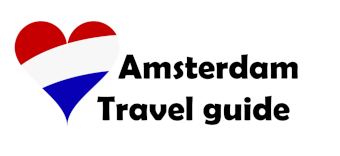

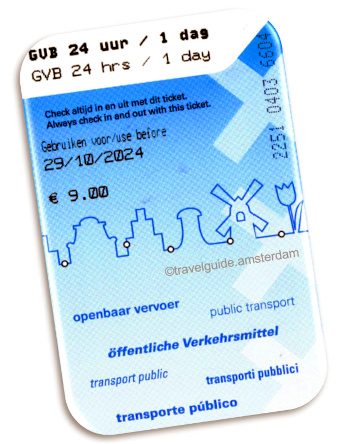
Is there a stop of metro subway near to Budget hotel Neutraal Amsterdam1012 LG?
Hello Yeoh,
the address of your hotel is “Damrak 8, 1012 LG Amsterdam, Netherlands”. This is right in the city center. The main train station “Centraal Station” is about 100m away. This is a transport hub for metro, train, bus, tram and ferries.
Have fun in Amsterdam